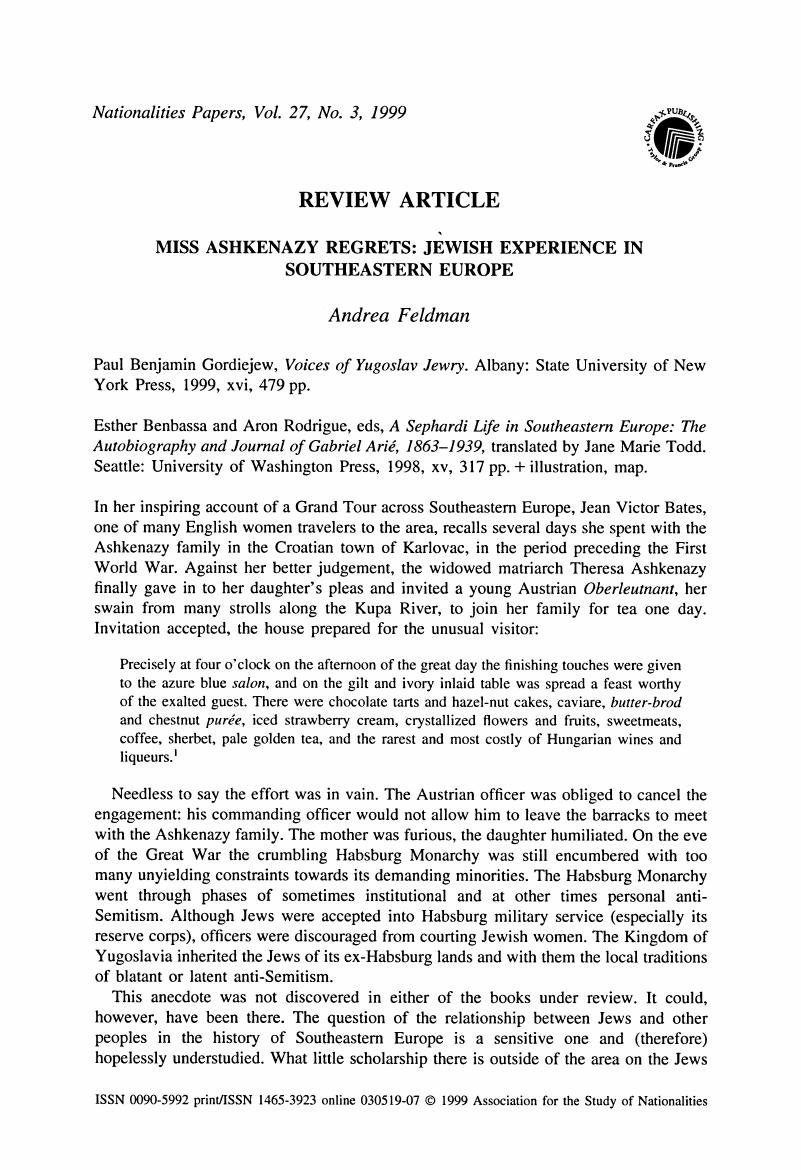No CrossRef data available.
Article contents
Miss Ashkenazy Regrets: Jewish Experience in Southeastern Europe
Published online by Cambridge University Press: 20 November 2018
Abstract

- Type
- Review Article
- Information
- Copyright
- Copyright © 1999 Association for the Study of Nationalities
References
Notes
1. Jean Victor Bates, Our Allies and Enemies in the Near East (New York: E. P. Dutton and Company, 1918), p. 210.Google Scholar
2. Židov , No. 1, 15, 12 April 1935, p. 1.Google Scholar
3. According to the 1921 census Jewish communities in Yugoslavia numbered 64,159 people. Ivo Banac, National Question in Yugoslavia: Origins, History, Politics (Ithaca, NY: Cornell University Press, 1984), p. 55.Google Scholar
4. Židov: Hajehudi: glasilo za pitanja židovstva , 16 September 1917, p. 1.Google Scholar
5. Židov , 21, 23 October 1918, p. 1.Google Scholar
6. Ibid., p. 3.Google Scholar
7. Goldstein, Slavko, “200 godina zagrebačke židovske zajednice,” in: 200 godina židova u Zagrebu , (Zagreb: Jevrejska općina Zagreb, 1988), p. 20.Google Scholar
8. Banac, National Question in Yugoslavia , p. 389.Google Scholar
9. On the intellectuals of “Stein's circle,” see Mladen Iveković, Hrvatska lijeva inteligencija 1918–1945 (Zagreb: Naprijed, 1970), pp. 280–286; Božo Kovačević, Psihoanaliza i ljevica (Zagreb: Flobus, 1989); Slučaj zagrebackih revizionista (Zagreb: Grafički Zavod Hrvatske, 1989).Google Scholar


